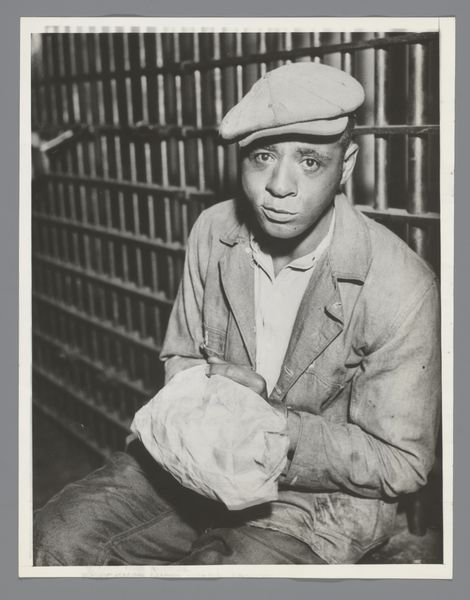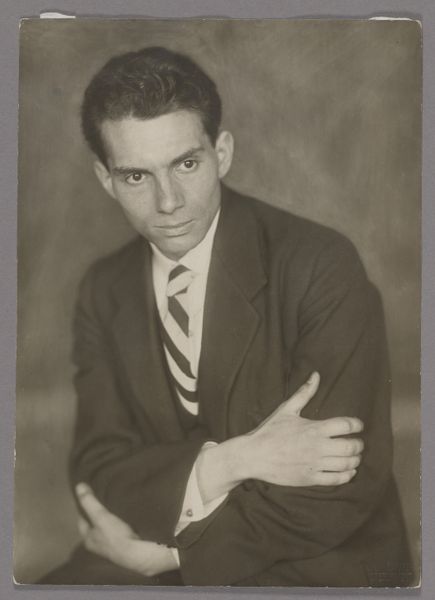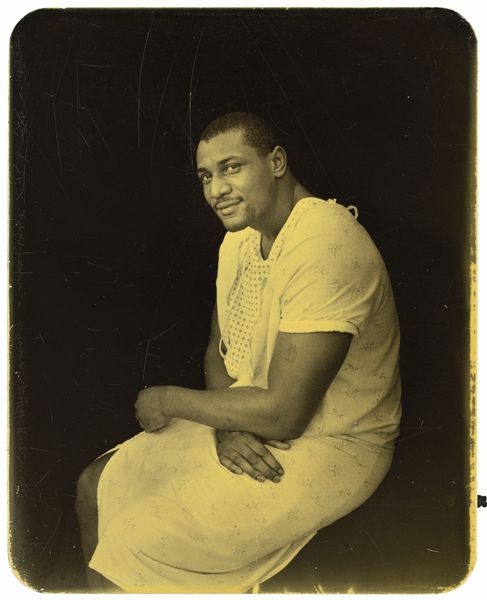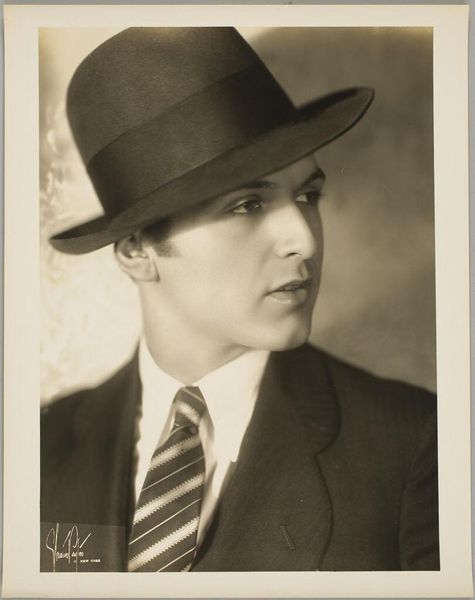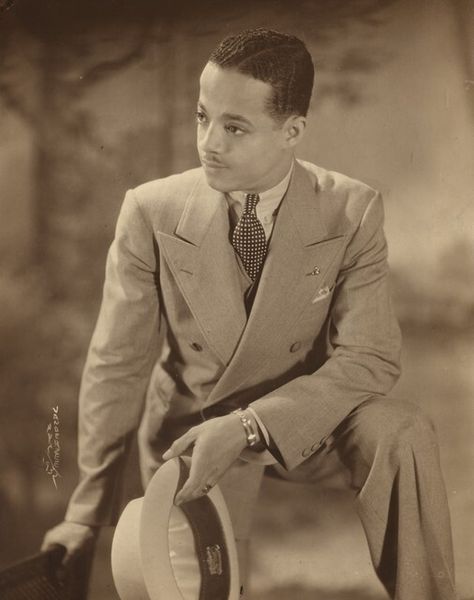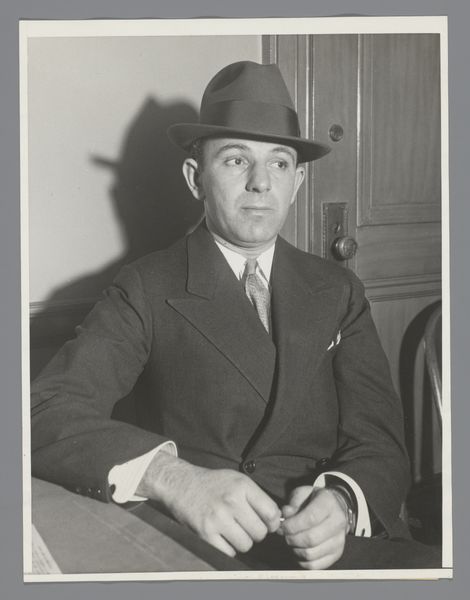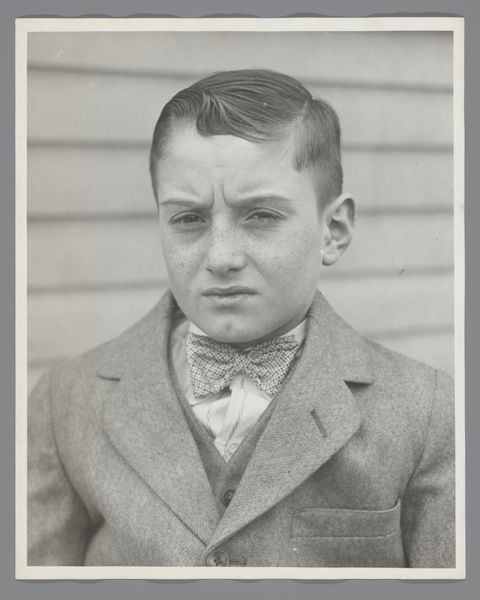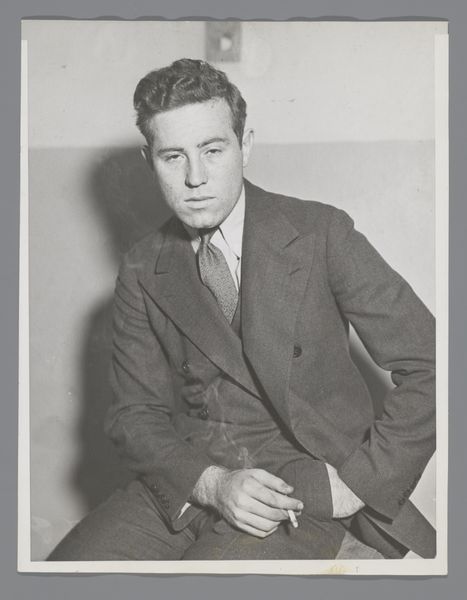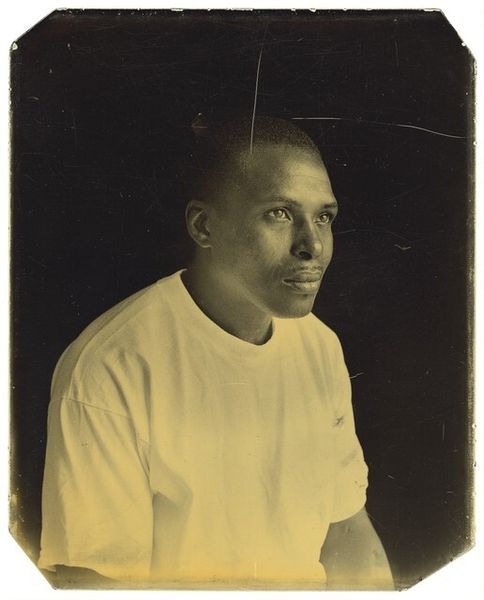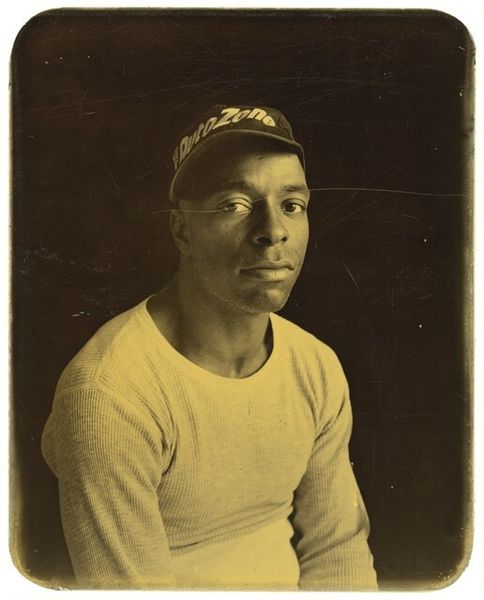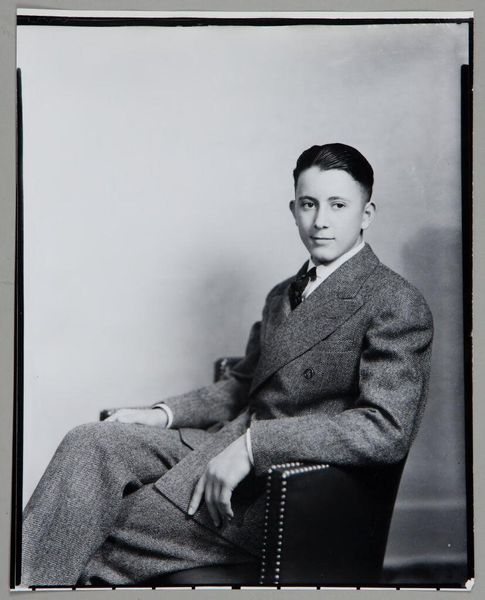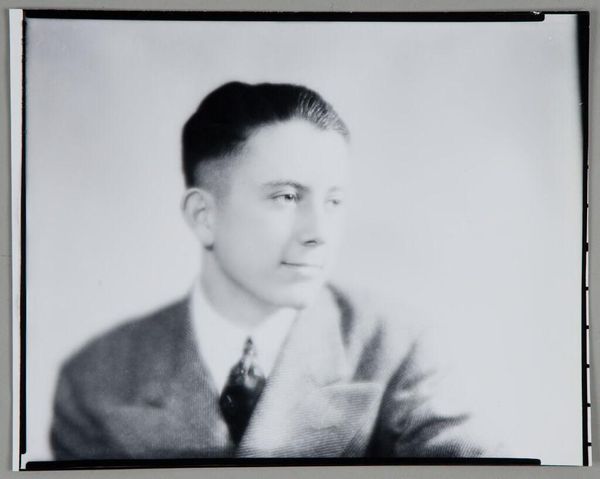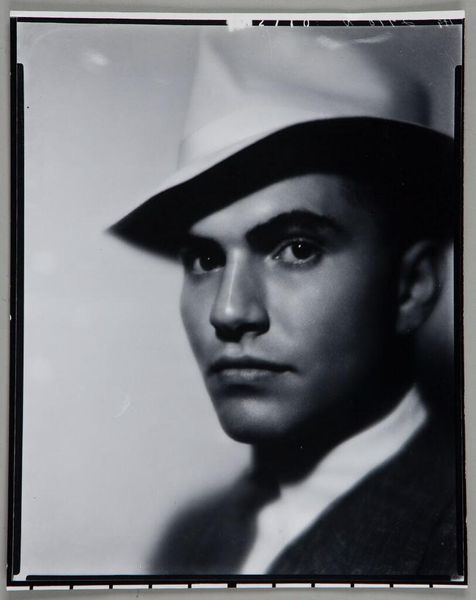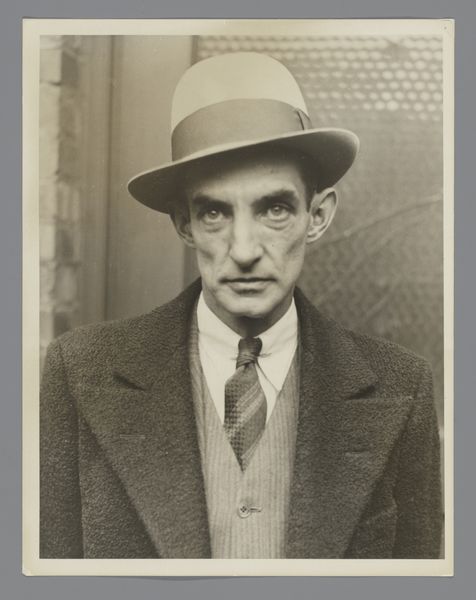
photography, gelatin-silver-print
#
portrait
#
photography
#
gelatin-silver-print
#
modernism
#
realism
Dimensions: height 240 mm, width 200 mm
Copyright: Rijks Museum: Open Domain
Curator: Here we have a photograph titled "Portret van Don Taylor," created in 1952. The medium is gelatin-silver print, that very classic process of twentieth century photography. What is your first impression? Editor: There is such formality communicated here—a carefully knotted tie, a pressed shirt under a thick woven tweed jacket, all crowned with a fedora. And yet, I see vulnerability, as Don’s gaze is slightly averted. Curator: I find that the hat suggests a powerful symbol. In those days, the fedora stood as an emblem of male identity and authority; but worn by a Black man in 1950s America, it also carried a strong undercurrent of self-assertion against a culture trying to negate identity and self-possession. Editor: Interesting that you would say that, given my feeling of his vulnerability. Gelatin silver prints are fascinating—a process deeply tied to industrialization, requiring factory-produced materials and standardized chemical processes. But it’s also worth pointing out the degree to which photographic portraiture democratized images; this man, in an earlier time, would likely have been unable to afford his own portrait. Curator: The textures—the weave of the jacket, the glossy tie, even the pores of his skin visible thanks to that gelatin silver process you describe—build a kind of psychological terrain. Look closely and you perceive a thoughtful inwardness. It suggests the complexities of Black identity amidst the socio-political tensions and struggles of the era, a balancing act. Editor: The act of representing Don Taylor at that time involved many constraints of materials and manufacturing—but also, you know, consider labor! It takes labor to construct that jacket, and the textile industries, right? All this labor of others going into presenting himself, yet perhaps limiting his actual self. Curator: I appreciate your insight, drawing attention to those industrial roots and labor costs that are embedded even here. Considering that history deepens the sense of Don Taylor deliberately building an outward self to confront a world that challenges him. Editor: Yes, I agree. Seeing the labor in an image helps me to not simply gloss over or immediately accept any reading of symbolism. Curator: Well, in either case, spending time with Don Taylor is thought-provoking, I hope our listeners are keen to draw their own insights, as well! Editor: Agreed. It's rewarding to analyze portraits like this one, peeling back the layers of context and intention to enrich our understanding of material existence.
Comments
No comments
Be the first to comment and join the conversation on the ultimate creative platform.
